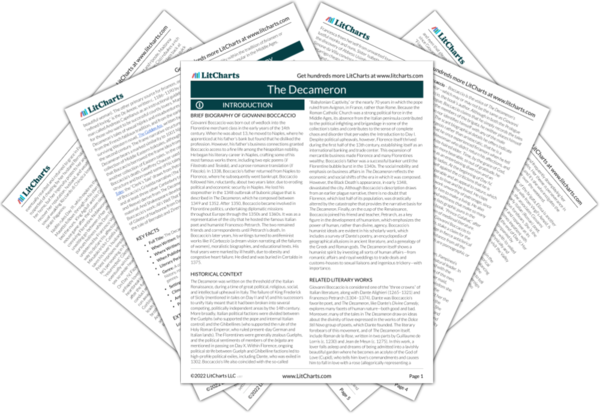Abraham’s conversion despite the sinful behavior he witnessed in Rome differentiates faith in Christian doctrines from mindlessly following the Roman Catholic Church, just like Panfilo’s story (I, 1). Moreover, stories like Abraham’s, in which a Jewish person converts to Christianity when they look at the faith objectively, were common in the Middle Ages and were used to criticize the stubbornness and reticence of Jews who refused to convert.
